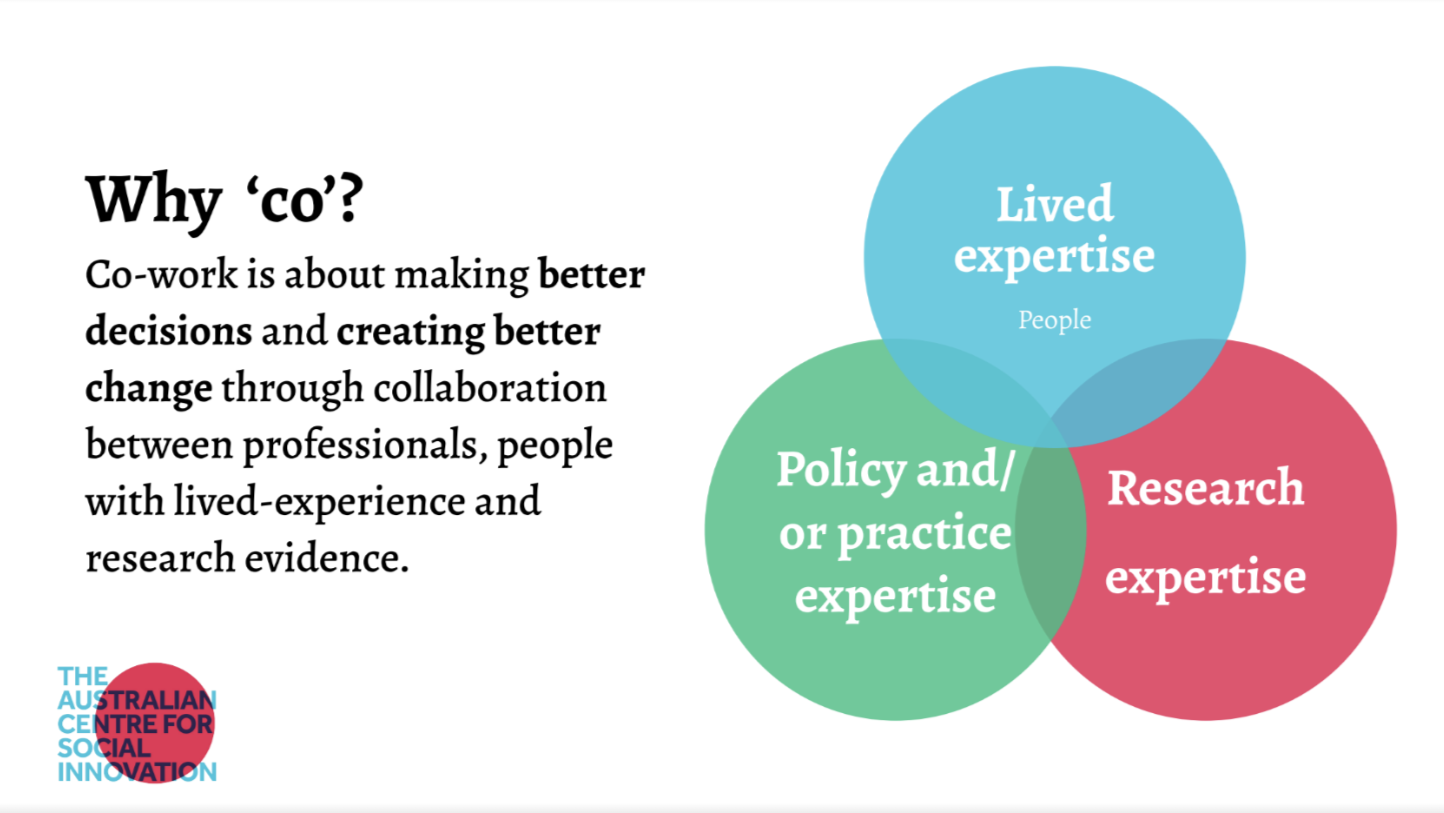Co-design, what is it and why is it on the rise?
Image supplied by TACSI
The concept of co-design has been around for a while, but it's only lately that the team at New Doors are seeing it pop up regularly as part of the selection criteria in tenders for the procurement of public works projects. So we contacted The Australian Centre for Social Innovation (TACSI) for some answers. Formed in 2009 as an initiative of the South Australian government, TACSI is an independent social enterprise working on projects and initiatives across Australia. They are co-design experts who have been bringing people and organisations together to creatively tackle society’s toughest challenges for over 13 years.
We chatted with Brugh O’Brien, Principal Social Innovator: Future of Home at TACSI, who explained why co-design is gaining traction as an innovative method to address complex challenges across various sectors, including services, policy, community, and place-based settings.
What is co-design?
Co-design is a participatory approach that involves making and testing things with the people who will be directly impacted or who will use, visit or inhabit the final product. It brings together multiple forms of expertise, allowing diverse stakeholders to make joint decisions. The practice revolves around designing with, rather than for, the end-users, creating genuine and authentic spaces for collective decision-making.
Unlike traditional consultation, which often occurs after a design is developed, co-design integrates community members and stakeholders throughout the process. It is mindful of sharing power, ensuring that decisions about the project's direction, brief, problem definition, and success criteria are democratically shared among all parties involved.
In a co-design process, expertise from various participants (professional or otherwise) carries equal weight. This interdisciplinary and integrated approach that values expert and lived-experience input equally allows people with different perspectives, pedagogies, lexicons, and tools to come together, fostering mutual trust and understanding. Through this alignment of views and values, participants can collectively define a successful outcome and ensure that tools and language are accessible to everyone involved.
Why is co-design suddenly so in demand?
Co-design has become increasingly necessary due to the limitations of existing systems and the failure of many solutions to meet their intended objectives. Often, the latest and greatest innovations fall short of expectations because they need more input from the communities they are meant to serve.
Furthermore, there is a recognition that modern challenges, such as inequality and issues affecting marginalised groups, require diverse perspectives. Co-design allows for including stakeholders like older people and individuals with disabilities, whose needs and experiences have historically been overlooked or undervalued in traditional design processes.
What are some of the challenges with implementing a co-design approach?
While co-design is a promising approach, it is still a relatively new and evolving concept. There is an ongoing effort to expand its potential and impact further. TACSI is aiming to shift the focus from co-design to co-production, where the right types of expertise are involved at all stages of development. Co-production emphasises the integration of diverse perspectives from the outset, ensuring a more inclusive and comprehensive design process.
Implementing co-design has its challenges. It requires philosophical alignment and a willingness to embrace the collaborative nature of the process. Additionally, co-design is not a one-size-fits-all solution, and its application may vary significantly based on the context and stakeholders involved.
Moreover, the term "co-design" itself can be limiting, and some critics argue that it causes confusion due to its ill-defined nature. Nevertheless, the core principles of co-design, such as collaboration, empowerment, and inclusivity, remain crucial in modern design practices.
How can built-environment professionals build co-design skills?
TACSI provides various learning opportunities, including free downloadable guides and toolkits, fee-based webinars, courses, and coaching. Check out the following:
Unpacking Codesign webpage
Prototyping webpage
Some broader social innovation resources and toolkits
Some readers may also be interested in TACSI’s action area on The Future of Home, the culmination of over seven years of research by TACSI and other social innovation organisations all over the world. It brings together over 25 projects into a vision for what a future ‘system for home’ could look like; a system that addresses housing problems in Australia and provides the foundation for all Australians to reach their potential.
Co-design represents a transformative shift in the design paradigm, fostering genuine collaboration and empowering communities to be active contributors in shaping their futures. By bringing together diverse expertise and perspectives, co-design holds the potential to create innovative and impactful solutions that genuinely address the needs and aspirations of society.
As we continue to acknowledge the limitations of existing systems and the urgency of addressing complex challenges, co-design becomes ever more prescient. By embracing this collaborative approach and moving towards co-production, we can harness the power of collective resources, knowledge, and experience to build a more equitable and sustainable future for all. Listening, adapting, and skillfully weaving together diverse contributions are essential to realising the full potential of co-design and its positive impact on our communities and society.



